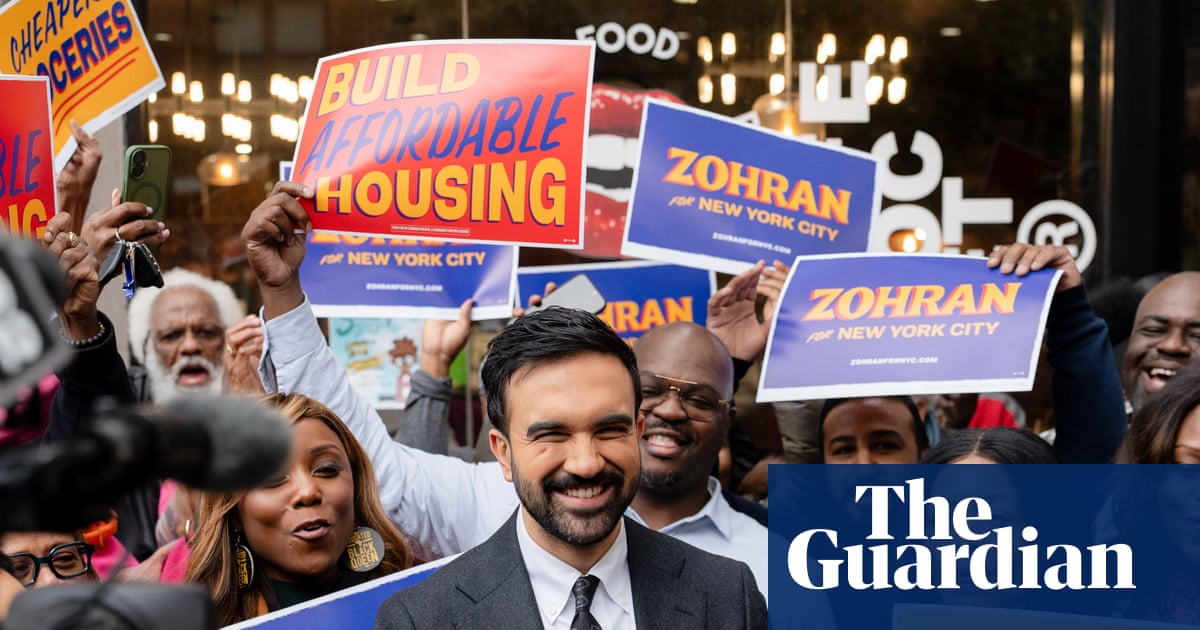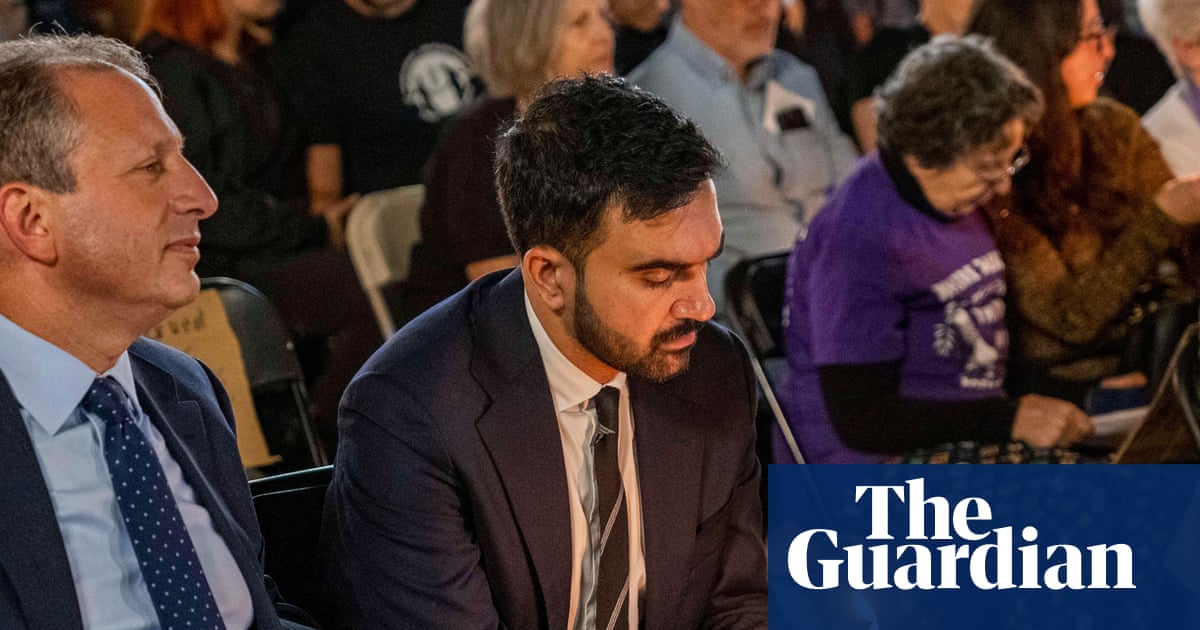Context may be everything in the precedent-shattering era of the current US supreme court.
For several years – since conservatives, gained a six-three majority on the bench thanks to Donald Trump’s nominations during his first presidency – the court has been delivering transformative rulings that have reverberated across the social and political landscape.
In 2022, it overturned Roe v Wade, ending the constitutional right to abortion that had existed for nearly half-a-century.
In July 2024, in a far-reaching decision, it granted Trump – and, by extension, other US presidents – sweeping immunity from prosecution for all acts, including potential crimes, committed in the course of his official duties.
This year, following his return to the White House, the court has sided with Trump roughly 20 times after administration officials sought relief from lower court rulings that pushed back on his assertion of expansive executive power to implement his agenda.
Now scrutiny on the nine justices is about to reach a new level of intensity as the court begins what is expected to be an unusually fraught term on Monday, amidst the president’s increasingly unfettered forays into authoritarianism.
With the president pushing to prosecute his political enemies, threatening a crackdown on the left on the putative grounds of combating violent extremism, and preparing to deploy military force in Democrat-run cities, the court is due to hear and issue rulings on a slew of ideologically-charged cases.
The survival of the landmark 1965 Voting Rights Act, the legality of transgender surgery, the rights of states to count mail-in ballots at elections, and Trump’s powers to impose his sweeping tariff policy could all be up for grabs in the coming weeks and months.
At stake, some seasoned legal experts say, is the very future of democratic governance in the US.
Daniel Epps, a law professor at Washington University in St Louis, Missouri, called the the court’s forthcoming session “unprecedented” in its constitutional significance.
“You have to go back to FDR and the beginning of the New Deal to find a comparable example of a president coming in and very quickly trying to effect transformational change requiring the supreme court to weigh in on what’s permissible.
“This may be more significant. How it all shakes out could have really big consequences for what our constitutional system looks like.”
He added: “The president’s power over the federal government seems pretty limitless, and in a period where he has sought to use that power to its absolute outer limits, not just pursue his vision of public policy, but to go after people that he dislikes, that’s quite frightening. The more power this court gives this president, the closer we slip towards authoritarianism and the notion of the rule of law ceases to carry a lot of weight.”
Recent court decisions and statements by some justices give little hope that Trump’s extravagant assertion of executive power will be reined back.
Clarence Thomas, the conservative justice whose outspoken opinions have often been criticised by liberals, hinted in a recent speech at the Catholic University of America that long-standing legal precedents may be overturned in forthcoming rulings.
“I don’t think that … any of these cases that have been decided are the gospel,” he said. “[T]he precedent should be respectful of our legal tradition, and our country and our laws, and be based on something – not just something somebody dreamt up and others went along with.”
Equally ominous has been the court’s increasingly common – and controversial – practice of siding with Trump on its so-called “shadow docket,” whereby it issues interim rulings without hearing full oral arguments or providing full explanations.
The administration has won 16 cases in a row at the court, and 19 times in all, after seeking emergency relief from the supreme court after judges in lower courts ruled against it. While such rulings have not been final, they have halted or stayed rulings issued by lower courts on a range of issues at the heart of the administrations agenda – including deportations, firing federal officials and the right of law enforcement officials to detain suspected undocumented people based on racial profiling.
“The supreme court has cleared the way for the Trump administration to implement various policies that federal courts concluded were likely illegal,” said Leah Litman, a law professor at the University of Michigan, and author of a recent book criticizing the court.
“It’s extremely unprecedented for a presidential administration to have that kind of winning streak at the supreme court – and the volume of cases that the Trump administration is asking the court for emergency relief on is also stunning.
“I think the court is rapidly re-sectioning the law and allowing the Trump administration to radically restructure the separation of powers, the nature of our government and the scope of our rights.”
If one case crystallizes the political stakes in the coming term, it may be Louisiana v Callais, which will consider a dispute over whether Louisiana’s creation of a majority Black district – required under section two of the Voting Rights Act to ensure more ethnic minority representation – violates the 14th or 15th amendments of the constitution.
At issue when the justices receive the case on 15 October, say advocates, is the very existence of an act that was a signal achievement of the 1960s civil rights movement – and whether Republican-run states can freely redraw congressional districts in their own favor.
Kim Lane Scheppele, a visiting law professor at Stanford University, predicted that the court would declare the act’s majority-minority district provision unconstitutional “because it’s not color blind.”
The political consequences could be profound, and could potentially affect the outcome of next year’s congressional midterm elections.
“It’s a pathway to gerrymandering in a Republican direction, because most of these minority-majority districts elect Democratic representatives,” said Scheppele.
“The court said a number of terms ago that partisan gerrymandering is none of its business. They’ve taken this case early, which means the court could speed up a judgment and issue that judgment in time for the districts to be redrawn before the midterms.”
Scheppele, an expert in the legal framework of authoritarian systems in Russia and Hungary, said the supreme court’s willingness to accommodate Trump had gone further than she anticipated.
“I thought they would do what a lot of other packed courts around the world have done, which is on questions of executive power, give the president everything he wants, but on civil liberties questions, impose some constraints,” she said.
Instead, the court had so far given Trump “everything he wants”, Scheppele said, citing its failure to issue a definitive ruling on birthright citizenship and an unsigned interim ruling allowing immigration personnel to stop and detain people in apparent breach of the constitution’s fourth amendment, which gives protection against “unreasonable searches and seizures”.
On birthright citizenship, the justices sidestepped giving a definitive ruling on a right that is supposed to be guaranteed by the US constitution. Instead, they voted by a six-three majority along conservative-liberal lines to grant the administration’s request to pause nationwide injunctions that had been issued by three federal judges to uphold the right.
Relief, if any is at hand, may lie with the lower courts, where even conservative judges have issued excoriating ruling lambasting some administration rulings.
On a recent podcast, Steve Vladeck, a professor at Georgetown University law center, said the supreme court “isn’t the whole story”.
More than 140 rulings had been issued by judges blocking some initiative of the Trump administration, he told the journalist Chris Cillizza.
While the Trump administration had appealed to the supreme court 28 times – vastly more than any previous administration – and gained significant relief, Vladeck said, its success rate still represented “a vast minority of the other cases”, giving the lower courts significant scope to apply the law.
Scheppele, goes further, predicting an ongoing tug-of-war between lower court judges and the supreme court.
“The lower court judges are mad as hell and they’re not going to take it,” she said. “We now have a bifurcated judiciary in which the top court is giving Trump everything he wants, and the lower courts are saying, ‘hey, wait a second, there’s law here.’”
Scheppele explained that judicial gridlock could ensue if lower court’s decide to apply the law as it existed before 20 January in the face of “incredibly sloppy” rulings from the supreme court.
The upshot, she said, could be a “civil war within the judiciary … [where] the supreme court is all in to giving Trump whatever he wants and the lower courts are saying, ‘you can’t do that’. And they’re going to gum up the works.
“They’re going to issue injunctions and try to stop the president from being a dictator. Then it will go to the supreme court, which will turn the dictator switch back on – and when that happens, the lower courts will get the cases again, because all the litigators have figured out the lower courts are still their friends.”

 German (DE)
German (DE)  English (US)
English (US)  Spanish (ES)
Spanish (ES)  French (FR)
French (FR)  Hindi (IN)
Hindi (IN)  Italian (IT)
Italian (IT)  Russian (RU)
Russian (RU)  2 weeks ago
2 weeks ago
























Comments